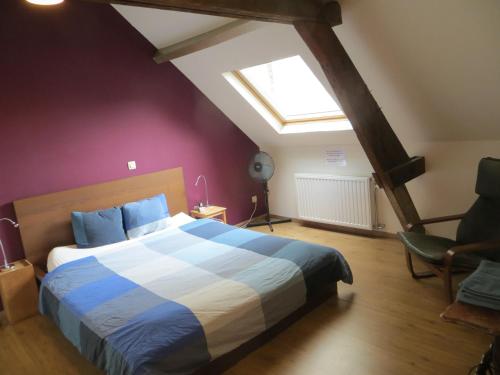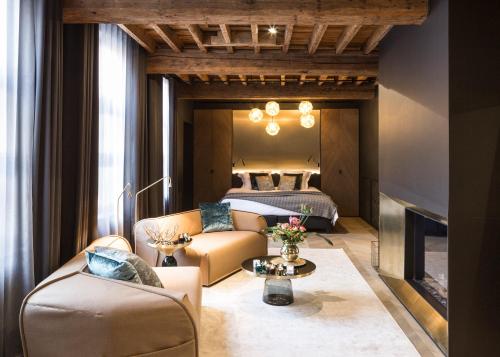In the era of modern media, content is everywhere. So much, it’s sometimes hard to find something meaningful.
The internet and social networks can sometimes feel like they’re full of white noise.
There’s no barrier to entry. Anyone can be a publisher these days. With a few clicks, you can create a social profile, set up a blog, or submit an article to an established website.
It’s cheap, if not free. Words and images have been devalued in their basic form.
This is not necessarily a bad thing. It allows people like me to create this blog for you; it lets ordinary people in extraordinary situations share their stories with the world; it democratises the flow of information.
But go back a few decades and this wasn’t the case. There was a cost to publishing and so, for economic reasons, the quality of content was assessed before it made it to the page or the screen.
The gatekeepers had much more control. White noise appeared more grey.
So just imagine what the situation was like 440 years ago. This was the year that Christophe Plantin established his printing company in the Belgian city of Antwerp.
Who were Christophe Plantin and Jan Moretus?
Christophe Plantin and Jan Moretus were two of the most important printers of the 16th century. Plantin founded the printing house that is now the Plantin-Moretus Museum in 1555, and Moretus was his son-in-law who took over after his death in 1589.
What is the Plantin Press?
The Plantin Press is the printing house that was founded by Christophe Plantin in 1555 in the Belgian city of Antwerp. It was one of the most important printing houses of the era, making books more accessible to the masses. It has been listed as a World Heritage Site.
Can you visit the Plantin-Moretus Workshops?
The original Plantin-Moretus Workshops have been well preserved over the centuries and have now been turned into the Plantin-Moretus Museum, which is open to the public almost every day.
Today, the headquarters are a historic site, the Plantin-Moretus Museum, home to the world’s oldest printing house, also known as the Plantin Press.
When you’re visiting Antwerp, I would recommend this very affordable walking tour of the city, to see all the highlights.
Although there are lots of things to see in Antwerp, I think a visit to the Plantin-Moretus Museum will show you one of the city’s most landmarks. Named one of Belgium’s World Heritage Sites, what you’ll see here really did change the world.
History of the Plantin-Moretus Workshops
Before the 16th century, there was no glut of content. It wasn’t just the cost of producing it that was an obstacle, it was the practicality of it.
The only way to create books, for example, was to write out each one by hand. Weeks of work and you reach just the one person who owns it. So different to today when, with a minute on the computer, you can reach millions.
This is way the developments at the Plantin-Moretus Workshops changed the world. Using type from Paris, the company created printing presses that could make multiple copies of the same book at speeds never seen before.
The workshops, also known as the Plantin Press, were founded in 1555 by Christophe Plantin in Antwerp. He was both a skilled printer AND a skilled businessman, which is once of the reasons he was able to grow his printing house into one of the biggest in Europe.
Not only did Plantin develop a new printing press that was more efficient and better quality, he also made a wide variety of books, including religious texts, academic works, and popular literature.
During his 34 years as a printer and publisher, Plantin produced 1887 major publications (not including things like leaflets and posters, of which there were another 600 or so).
That means his company printed an average of 55 publications each year. So, each week he was basically producing a new book – and each of them had a run of about 1000 copies.
If a book was particularly popular, he would do about 2500 copies. The most popular of all was a Hebrew Bible in 1566 that was printed 7800 times.
It looks basic by today’s standards but it revolutionised the written word back then. Suddenly books became cheaper and much more available.
In 1576, Plantin moved his printing house to a new location in Antwerp, which is were the museum still is today, on Vrijdagmarkt.
When he died in 1589, his son-in-law Jan Moretus took over, and his descendants continued to run it for over 200 years, printing many more important books, including the Plantin Ploygot Bible, which is considered a masterpiece.
Finally the Plantin-Moretus Workshops closed in 1867 and it was converted into a museum a decade later.
Highlights of the Plantin-Moretus Museum
When you visit the Platin-Moretus Museum in Antwerp, there are a few different elements to explore.
The first is the building itself, which is architecturally significant. Inside, you’ll also find the living quarters of the family – grand rooms filled with collectables and less lavish areas for the staff.
It’s worth taking note of a small room on one side of the house which looks like a quaint old bookstore. In fact, it is, and the company sold books from here directly to people on the street.
A highlight is stepping into the Great Library. This was designed like a private humanist library of the 17th century with busts, globes and paintings decorating the areas not taken up with books.
Although the collection of books here has been expanded since the library was created, it’s still an authentic representation.
Of course, the main attraction of the museum is the printing press workshop and associated exhibits. Christophe Plantin turned his company into the largest typographical business in Europe in the 16th century and this is where all the action happened.
Here, you can see a number of original printing presses, typecases, and other equipment. These include the two oldest remaining printing presses in the world, built around 1600.
Also, there is an impressive collection of paintings in the museum by Peter Paul Rubens. The third owner of the printing press, Balthasar I Moretus, was a friend of the artist, which is why there are so many here.
Visiting the Plantin-Moretus Museum
There’s lots to see and lots to learn as you walk through the museum, spread out over two levels and across annexes in the workshops and home of this fascinating family.
I would highly recommend getting the audioguide for your visit, to make sure you appreciate the significance of each room. It’s well put together and informative.
And when you get to the room full of printing presses, perhaps with a staff member doing a demonstration for a school group, stop for a moment and think about what was once created here.
Content that mattered, that took time to write and took time to publish. It was not gone in a flash, it was treasured. And still is.
Where is the Plantin-Moretus Museum?
Plantin-Moretus Museum is located in the heart of Antwerp, along the river Scheldt and near Sint-Annatunnel.
The address is Vrijdagmarkt 22 2000 Antwerp, Belgium. You can see it on a map here.
How do you get to the Plantin-Moretus Museum?
By tram, you can get to the Plantin-Moretus museum from Antwerp Central on tram 3, 9 or 15.
Or you can use bus number 22, 25 or 26. Get off at the Groenplaats stop.
By car, parking is available at the Groenplaats, Brabo (Kammenstraat) and Scheldekaai Noord (Jordaenskaai) car parks. The nearest parking spaces for people with disabilities are on ‘de Oever’ in front of numbers 10 and 14 (two spaces) and on Sint-Jansvliet in front of number 3 (three spaces)
When is the Plantin-Moretus Museum open?
The museum is open Tuesday to Sunday from 10:00 – 17:00.
It is closed on Mondays, except it is open on Easter Monday and Whit Monday.
On 24 and 31 December, the museum closes at 15:00.
The museum is closed on the following holidays: 1 January, 1 May, 1 November, 25 December.
What is the Plantin-Moretus Museum entrance fee?
A standard ticket (aged 26 and above) costs €12. A concession ticket is €8.
Admission is free for visitors under 18 years of age.
You’ll also get free entry with the Antwerp City Pass (with 20 Antwerp attractions included) or the MuseumPASSmusées (with more than 100 Belgian museums included).
for €59 which grants you entry to over 100 Belgian museums.
Are there tours of the Plantin-Moretus Museum?
While there aren’t official tours of the museum, you may be interested in this walking tour of Antwerp that will give you a lot more context about the city during this period. (The tour is cheap and the guide mostly relies on tips as payment.)
Or there is this private tour that will highlight the Plantin-Moretus Museum a bit more as part of the experience.
For more information, see the official website of the Plantin-Moretus Museum.
There are lots of other things to see in Antwerp, other than just the Plantin-Moretus Museum. I would recommend staying for a couple of days and seeing some other Antwerp museums and sights.
Here are a few tours that will show you some of the other heritage parts of Antwerp.
Another World Heritage Site, the Belfries of Belgium and France, has two locations represented here as well.
Also, if you need a recommendation for accommodation, I’ve got some options here:
THE BEST ACCOMMODATION IN ANTWERP
Antwerp is a popular city for tourists, so there is a good range of accommodation available
BACKPACKER

For a backpacker option, I would recommend the Kabas Hostel, with a large and friendly common area.
BUDGET
If you’re looking for a budget hotel, Beaux ARTS is in a cool hipster area and has nice comfortable rooms.
BOUTIQUE

A cool hotel with a rock and roll theme is the Rock Lobster City Lodge.
LUXURY

And for an absolutely spectacular luxury experience, you can’t go past the Gulde Schoen The Suite Hotel!
So interesting, I loved reading this! Your pictures are also stunning.
Again a great read and interesting post about a destination not many people visit in Belgium!
It’s crazy to think about how difficult it was to access information in the past compared to now. Really Interesting to see the process of printing. Great photos!
A stunning place – the first picture reminds me of my goal that if I win the lottery, I’m building my own library
Ha – yes, I know what you mean! When I started travelling, I got rid of most of my books. But I would love to have a library full of cool old books. With a globe in the middle – that would make it perfect! 🙂